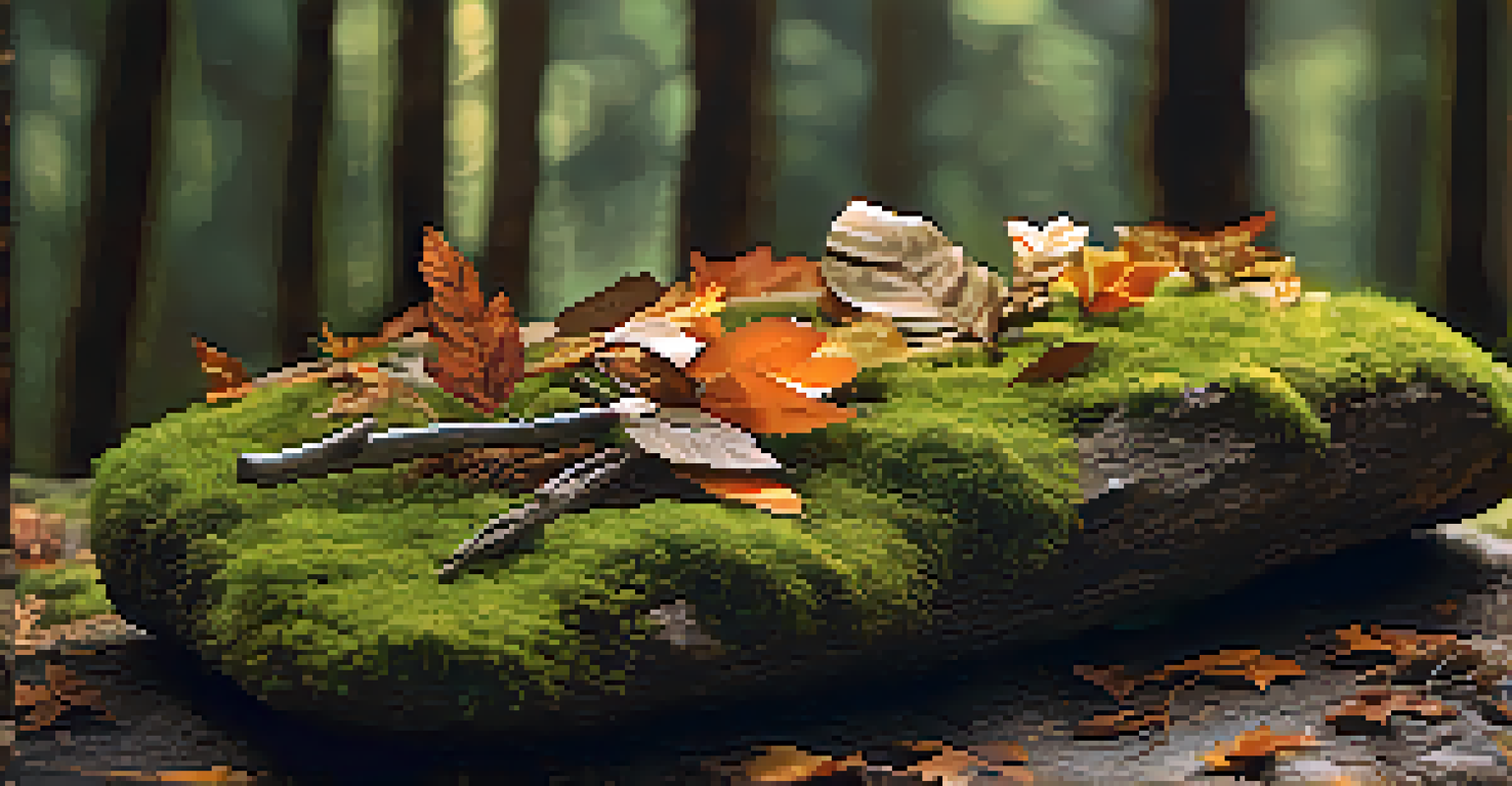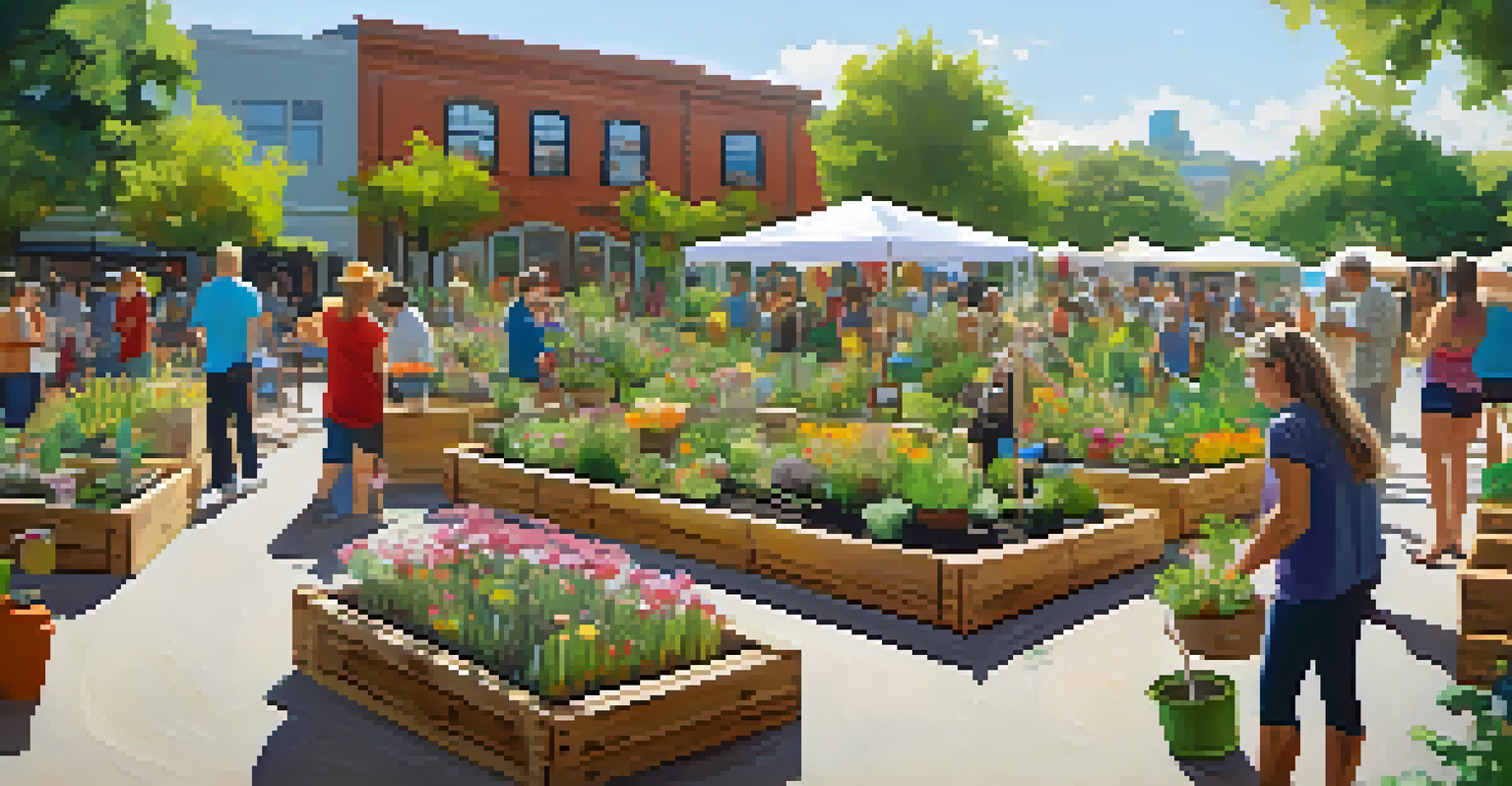Exploring Eco-Art: The Intersection of Nature and Creativity

What is Eco-Art? Understanding the Concept
Eco-art is a creative movement that merges environmental issues with artistic expression. Artists use natural materials, themes, and processes to convey messages about nature and sustainability. This innovative approach not only showcases creativity but also raises awareness about the ecological challenges we face today.
Art is not a mirror held up to reality, but a hammer with which to shape it.
By integrating elements like plants, soil, and recycled materials, eco-artists create pieces that reflect the beauty of the environment while addressing critical issues like climate change and habitat destruction. It's a way to engage with nature not just as a subject but as a partner in the creative process. This collaboration often results in art that is both visually stunning and thought-provoking.
Whether displayed in galleries or public spaces, eco-art serves as a reminder of our responsibility to the planet. It encourages viewers to consider their relationship with nature and to think about how their actions impact the environment. In essence, eco-art inspires a deeper connection between humanity and the natural world.
The Role of Nature in Eco-Art Creation
Nature plays a pivotal role in eco-art, serving as both a muse and a medium. Artists often venture into natural settings to gather materials, which might include anything from fallen leaves to rocks. This not only grounds their work in the environment but also fosters a sense of connection and reverence for the earth’s resources.

The process of creating eco-art often involves using biodegradable or sustainable materials, which contrasts sharply with traditional art practices that may rely on synthetic substances. This shift not only reduces waste but also reflects a commitment to eco-friendly practices. Artists become stewards of their materials, choosing how to use them in ways that honor the planet.
Eco-Art Merges Nature and Creativity
Eco-art combines environmental themes with artistic expression, using natural materials to raise awareness about ecological issues.
Moreover, the natural elements used in eco-art can change over time, adding a dynamic aspect to the work. For instance, a piece made from twigs may decay or transform as seasons change, thus allowing the artwork to evolve alongside nature. This impermanence invites viewers to appreciate not just the art itself, but the ongoing cycle of life and decay.
Famous Eco-Art Installations Around the World
Several iconic eco-art installations have captured global attention, demonstrating the power of art in advocating for environmental issues. One notable example is Christo and Jeanne-Claude’s 'The Gates' in Central Park, where thousands of orange fabric gates transformed the landscape, inviting visitors to experience nature in a new light. This installation sparked conversations about public space and environmental awareness.
The greatest threat to our planet is the belief that someone else will save it.
Another prominent work is Andy Goldsworthy's ephemeral sculptures made from natural elements like ice, leaves, and stones. His pieces often exist only briefly, emphasizing the beauty of transience in nature. Through his work, Goldsworthy encourages audiences to reflect on the delicate balance of ecosystems and the impact of human intervention.
These installations not only engage viewers visually but also provoke thought and discussion about pressing environmental issues. They demonstrate how art can transcend aesthetics, becoming a powerful tool for social change and environmental advocacy, urging us to reconsider our relationship with the natural world.
Eco-Art and Community Engagement
Eco-art extends its reach beyond individual artists; it often fosters community engagement and collaboration. Many eco-art projects involve local communities in the creation process, encouraging participants to contribute materials or ideas. This collaborative spirit builds a sense of ownership and connection to the artwork and the environment it represents.
For example, community gardens can become living art installations, where residents work together to cultivate plants and create beautiful green spaces. These initiatives not only enhance the local environment but also strengthen community ties and promote sustainable practices. In this way, eco-art becomes a catalyst for social change and ecological awareness.
Community Engagement in Eco-Art
Eco-art projects often involve local communities, fostering collaboration and a deeper connection to both the artwork and the environment.
Moreover, workshops and events centered around eco-art provide educational opportunities for participants of all ages. Through hands-on experiences, people learn about environmental issues, art techniques, and the importance of sustainability. This knowledge empowers individuals to take action in their own lives, fostering a culture of environmental stewardship within the community.
The Impact of Eco-Art on Environmental Awareness
Eco-art plays a significant role in raising awareness about environmental issues. By using art as a vehicle for communication, eco-artists can reach audiences who may not engage with traditional environmental activism. The visual and emotional power of art can evoke feelings and provoke thought in ways that statistics and reports often cannot.
For instance, installations that highlight pollution or deforestation can make abstract concepts more tangible and relatable. When people see a large-scale art piece made from plastic waste, it can create a visceral reaction and inspire change. This emotional connection is a crucial step in motivating individuals to consider their impact on the environment.
Additionally, eco-art can spark dialogue and encourage community involvement in environmental initiatives. As people engage with eco-art, they may be inspired to adopt sustainable practices in their own lives or support conservation efforts. By bridging the gap between art and activism, eco-art fosters a culture of awareness and action.
Challenges Faced by Eco-Art Practitioners
Despite its benefits, eco-art practitioners often face unique challenges in their work. One significant issue is the availability of sustainable materials, which can sometimes be difficult to source. Artists may have to invest considerable time and effort in finding eco-friendly options that align with their vision, which can be both frustrating and resource-intensive.
Additionally, there’s the challenge of public perception. Some people might view eco-art as less serious or impactful compared to traditional art forms. This misconception can overshadow the meaningful messages behind the work, making it harder for artists to gain recognition and support. However, as awareness of environmental issues grows, so too does appreciation for the role of eco-art.
Eco-Art as a Tool for Awareness
By making environmental issues more tangible through visual art, eco-art plays a significant role in motivating individuals to act on sustainability.
Lastly, eco-art can sometimes be ephemeral, leading to concerns about its longevity and impact. While the temporary nature of some installations can be a powerful statement about impermanence, it may also raise questions about the lasting effect of the artwork. Artists must navigate these complexities while remaining committed to their vision and the messages they wish to convey.
The Future of Eco-Art: Trends and Innovations
The future of eco-art looks promising, with emerging trends that continue to push creative boundaries. One exciting development is the integration of technology, where artists use digital tools to create interactive eco-art experiences. For instance, augmented reality can bring eco-art to life in new ways, enhancing the viewer's experience and understanding of environmental themes.
Moreover, social media platforms are playing a crucial role in amplifying the reach of eco-art. Artists can share their work with a global audience, fostering connections and collaborations across borders. This digital exposure not only promotes individual artists but also sparks discussions about environmental issues on a broader scale.

As the urgency of climate change and ecological challenges grows, eco-art is likely to evolve in response. Artists will continue to find inventive ways to address these pressing issues, using their creativity to inspire action and change. Through innovation and collaboration, the eco-art movement will remain a vital force in the intersection of nature and creativity.